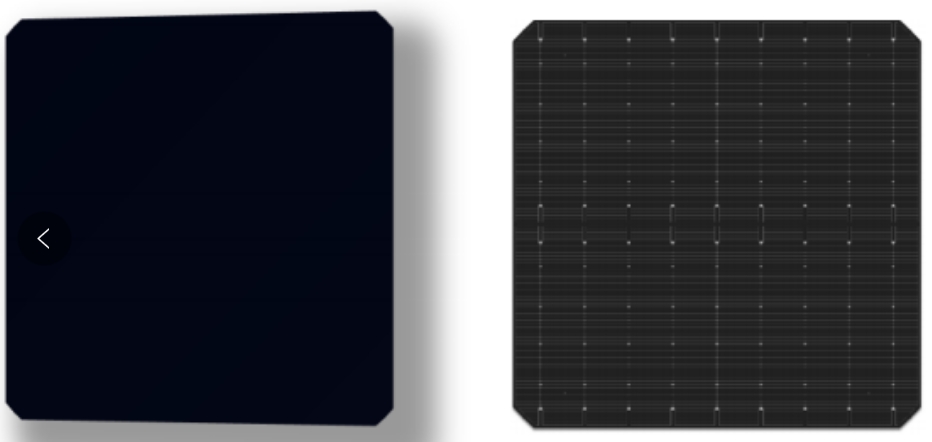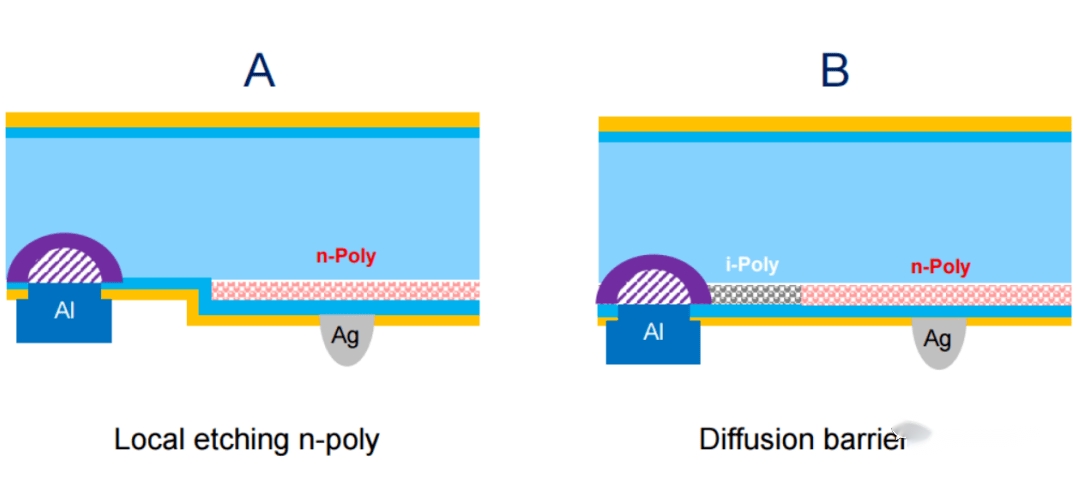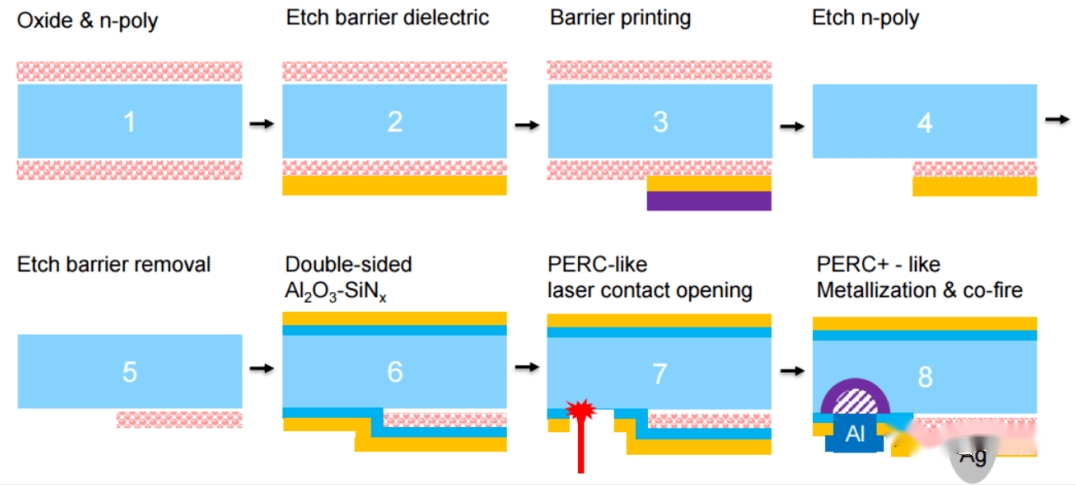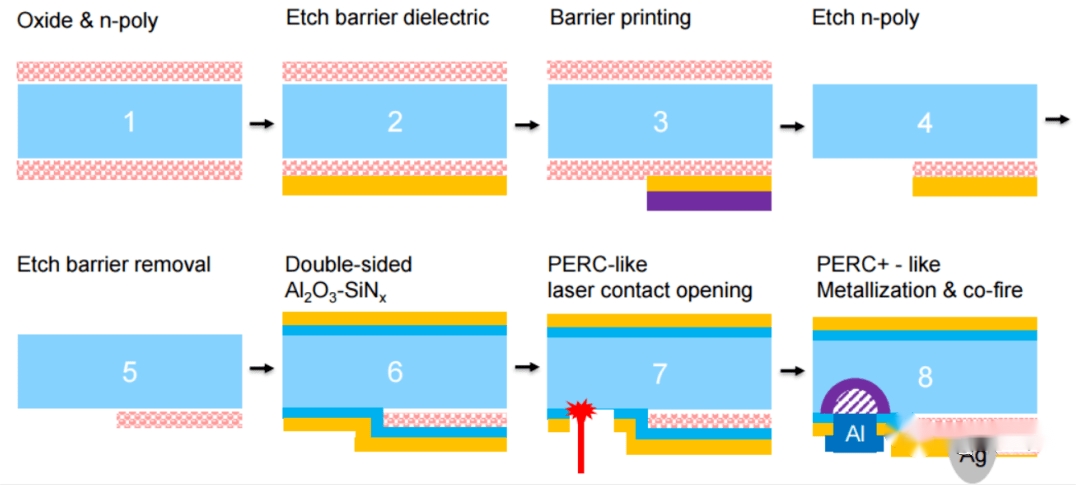1. HPBC solar cell technology
HPBC-Hybrid Passivated Back Contact is a new generation of high-efficiency solar cell technology characterized by no grid on the front of the solar cell.

HPBC solar cell vs. PERC solar cell

(1) The solar cell technology combines two advanced solar cell technologies in the industry, TOPCon and IBC technology, firstly, the solar cell realizes high-quality passivation and current transmission on the cell surface through silicon oxide and heavily doped polysilicon layers, reduces the recombination of carriers generated by light, and improves the efficiency and voltage of the component.
(2) By combining the solar cell process of IBC, the metal electrodes are arranged on the back of the solar cell in a cross-finger shape, and all the metal grid lines of the solar cell responsible for collecting and transmitting carriers are moved to the back of the component, and the front of the solar cell used to receive the light is completely unblocked by the grid line, so that the light incident to the solar cell is fully absorbed, and the light utilization rate of the solar cell is improved, so that the photoelectric conversion efficiency of the HPBC solar cell is greatly improved, up to 25%.
2. HPBC solar cell process



Two P-IBC cell structures

Process flow (1): etch mask

Process flow (2): full laser
3. HPBC solar cell technology difficulties and problems
(1) Difficulty: Graphical N/P area
Objective: To establish an independent electron/hole transport channel on the back of the solar cell
Process: laser grooving. Laser 1 and laser 2 are patterned, and laser 3 is used for SiNx opening before metallization.
Requirements: uniform laser energy
(2) Duplex rate problem:
BC solar cells sacrifice a certain bifacial rate because the electrodes are on the back, but the efficiency gain brought by a 3-4% increase in the shading area on the front is enough to offset the impact of the reduced efficiency on the back. From the perspective of application scenarios, the single-sided characteristics of BC cells and their application to rooftop photovoltaics can be 2-3% higher than TOPCon. The bifacial rate of BC solar cells still has room for improvement, and the current BC solar cells are mainly targeting the single-sided market, and will not participate in the double-sided market competition until the double-sided performance shows obvious advantages.
(3) Packaging
The IBC electrodes are all on the back and cannot be connected in a straight line with a single welding strip. The welding process of IBC components requires special interconnection welding strips for connection, and the difficulty of the interconnection process is the insulation problem: the solar cell cell itself is insulated, but this method is expensive; The use of insulating adhesive film to insulate the back contact cells before soldering, but will affect the production efficiency of the component.